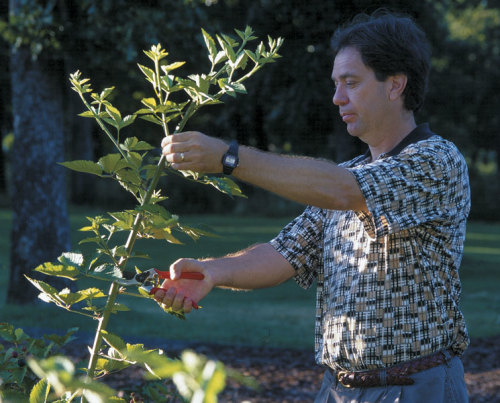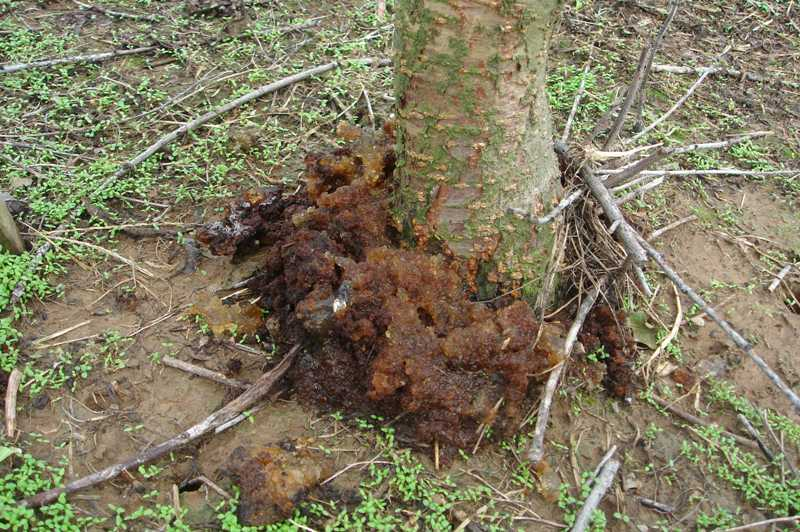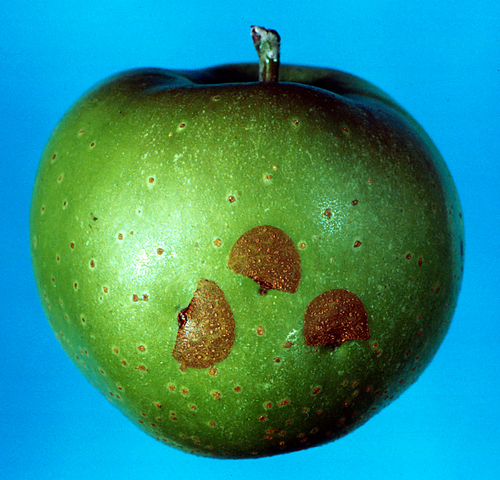POP TIPS: August Orchard Care
23 views
Skip to first unread message
Phil Forsyth
Aug 1, 2022, 10:21:10 AM8/1/22
to Philadelphia Orchard Group
Dear Philly Orchardists,
August is another exciting month for harvests, with the last berries and stone fruits ripening, followed later in the month by early apples, pears, Asian pears, and main crop figs!
Please check out our new POP Monthly Orchard Task List for recommended maintenance activities to complete this month (the July/Aug list is also attached below).
Here is some more detail on some of the key tasks for Aug:
Orchard Watering
New plantings (from this spring or last fall) should be watered thoroughly once per week throughout the summer months. In most years in our wet climate, established orchard plantings don't require much in the way of supplemental watering. However, this summer has been very hot and drier than usual- check for stressed plants that may need a bit of extra watering!
Summer Weeding
Summer Bramble Pruning
By August, second year canes of raspberries will have finished fruiting and begun to die back. These dead canes can be pruned out anytime between late summer and late winter. For blackberries, tip back first year canes (non-fruiting) to encourage greater side branching for next year's harvest.

Emergency Pruning
During the summer months, most pruning should be limited to emergency pruning only.
Keep an eye out for any diseased, damaged, or dead wood that should be pruned away no matter the season. Pay special attention to the base of trees - especially of the stone fruit varieties: apricots, peaches, plums, nectarines - and prune away root suckers, the quick upright growth that can be a cover for dreaded borers, which make a home beneath trunk wood.

Bacterial canker on cherry and other stone fruits can often be identified by gummosis or oozing sap. This disease is best cut out using a sharp sanitized knife during hot,dry weather.
Pest and Disease Monitoring & Identification

Keep an eye out for peach tree borer damage at the base of all stone fruit trees from summer through fall! Unlike most insect pests, borers can actually rapidly kill an established tree if left unchecked. Use a flexible wire to kill any active larvae and read more about preventative measures for borers here.
Observe your orchard regularly throughout the year for pest and disease problems, identify and respond appropriately. We've been distributing physical copies to community partners, but you can also check out POP's Scouting Guides for pest and disease management available for download on our website:
These guides are intended to help properly identify the insect pests and diseases that affect the following common fruit trees:
The guides include lots of photos and a description of how to identify the particular pest or disease and the damage caused by it. Proper identification is essential to treating these problems, as each has its own unique options for management! Once you have identified a pest or disease, you can then consult our website for management recommendations by using our search function:
Read our POP TIPS email with specific summer tasks for Oriental Fruit Moth and Brown Rot management.
Remove Damaged and Dropped Fruit
Although the ideal time for thinning fruit has passed, it is still advisable to continue to monitor your developing crops for insect and disease damage and remove the affected fruit. Similarly, it is best to gather any fallen fruit to avoid the further spread of pest and disease challenges. All fruit should be disposed of by adding to a hot compost system, feeding to poultry, or bagging up to remove from the site.

Distinctive crescent shaped scars from the Plum Curculio weevil can be found on pome and stone fruits. Remove affected fruits, dispose of dropped fruit, and watch out for a second generation of this common pest in late July and August! .
Summer Harvests!
Look out for ripening blackberries, peaches, plums, figs, Asian pears, pears, apples, grapes, cornelian cherries, jujubes, elderberries, rose hips, chokeberries, maypops, perennial herbs and greens, and more! Record your harvests using our handy POP Harvest Tracking Sheet.
Enjoy the summer harvests and stay cool in the heat!
Phil Forsyth, Co-Executive Director
Philadelphia Orchard Project
Pronouns: he/him
Phil Forsyth
Aug 1, 2023, 7:46:02 AM8/1/23
to Philadelphia Orchard Group
Dear Philly Orchardists,
August is another exciting month for harvests, with the last berries and stone fruits ripening, followed later in the month by early apples, pears, Asian pears, and main crop figs!
Having challenges growing peaches or other stone fruits? Join us this month for a special orchard care workshop:
Wednesday, 8/16 at 5:30 to 7pm
@ Grumblethorpe in Germantown
Please check out our POP Monthly Orchard Task List for recommended maintenance activities to complete this month (the July/Aug list is also attached below).
Here is some more detail on some of the key tasks for Aug:
Orchard Watering
New plantings (from this spring or last fall) should be watered thoroughly once per week throughout the summer months. In most years in our wet climate, established orchard plantings don't require much in the way of supplemental watering except in the case of extended drought.
Summer Weeding
Remove Damaged and Dropped Fruit
Although the ideal time for thinning fruit has passed, it is still advisable to continue to monitor your developing crops for insect and disease damage and remove the affected fruit. Similarly, it is best to gather any fallen fruit to avoid the further spread of pest and disease challenges. All fruit should be disposed of by adding to a hot compost system, feeding to poultry, or bagging up to remove from the site.

Distinctive crescent shaped scars from the Plum Curculio weevil can be found on pome and stone fruits. Remove affected fruits, dispose of dropped fruit, and watch out for a second generation of this common pest in late July and August!
Summer Harvests!
Reply all
Reply to author
Forward
0 new messages
